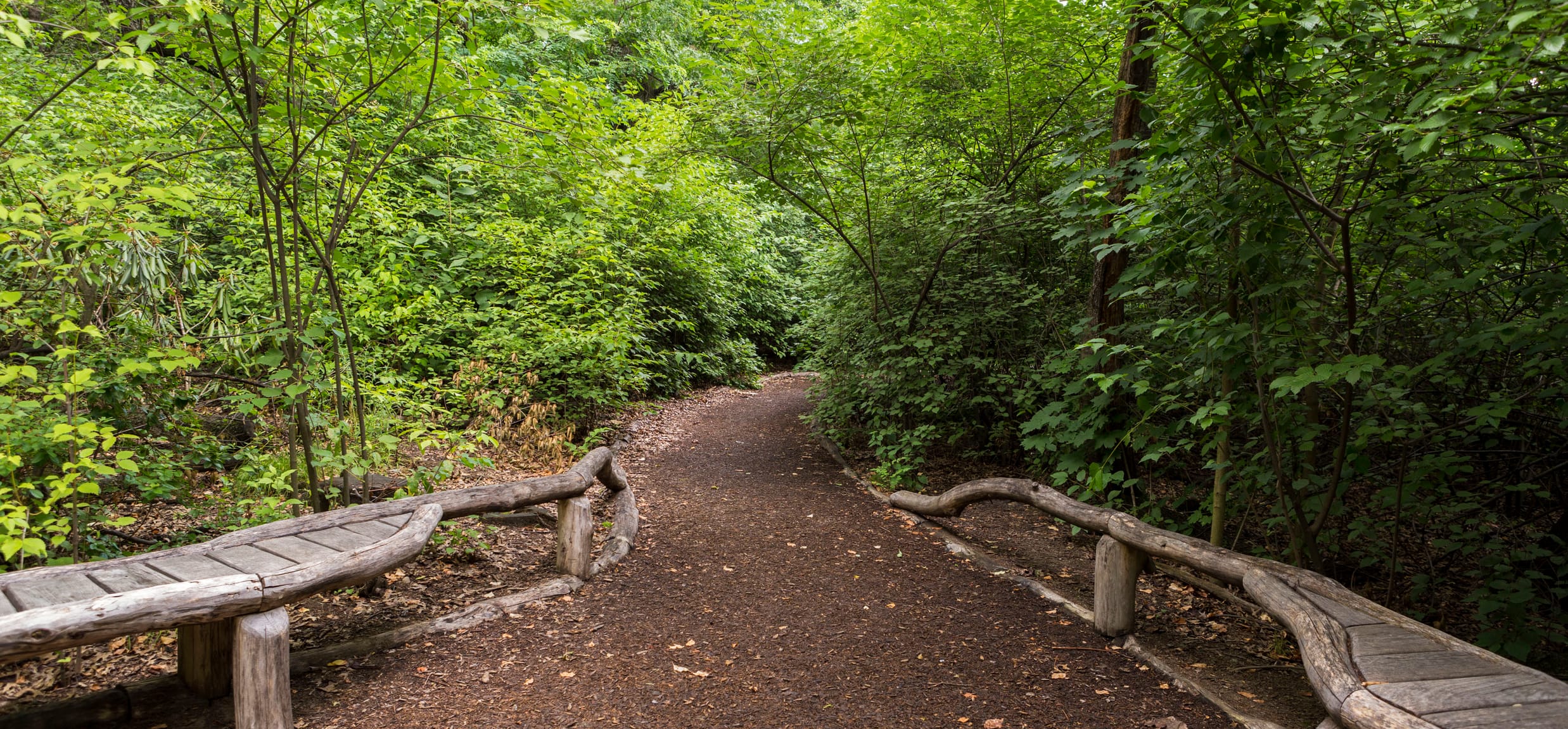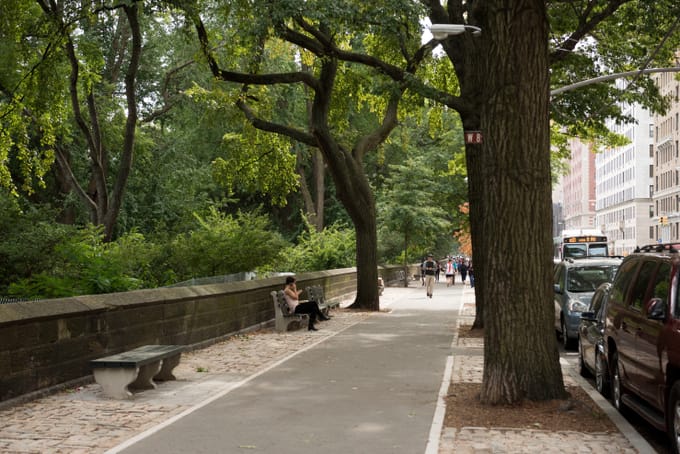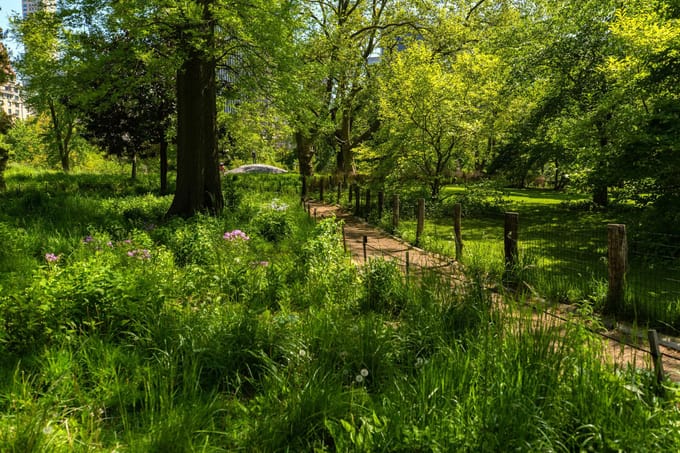Restoration
Restoration of the Hallett Nature Sanctuary

Our work in the Hallett Nature Sanctuary consisted of restoring the landscape, expanding trails, and constructing rustic features, including a hand-crafted wooden gate at the sanctuary’s entrance.
At just four acres, the Hallett Nature Sanctuary is the smallest of the Park's three woodland landscapes (which also include the Ramble and North Woods). Surrounded on three sides by the Pond at the southeast corner of Central Park, it was fenced off in 1934 and designated a bird sanctuary by NYC Parks Commissioner Robert Moses.
Neglected for decades, the Hallett became overgrown with invasive species such as Norway maples, black cherries, wisteria, and Japanese knotgrasses. It remained closed and virtually untouched.
In 2001, the Conservancy began restoration and maintenance work in the sanctuary, emphasizing two equally important and mutually reinforcing considerations: the ecological value of the woodlands as a wildlife habitat, and the cultural value of the Park as a scenic landmark. The sanctuary opened for periodic guided tours in 2013, and for public open hours in 2016.
Scenic overlook, before and after restoration
Restoration included new rustic benches and railings
Improvements to the Hallett Nature Sanctuary included:
- Removal of invasive plants, improvement of soil health, and diversification of native plant communities. These are all supported by extended irrigation lines into the sanctuary that allow workers to water the plantings regularly.
- Expansion of trails to encourage further exploration, including the introduction of accessible trails designed to meet standards established by the U.S. Access Board for recreational trails in outdoor areas.
- Lowering the height of the fence that surrounds the Hallett from 8 feet to a less imposing 4 feet.
- Construction of a rustic hand-crafted wooden gate that acts as a visual transition to welcome visitors to the sanctuary. Carved from durable black locust timber, the gate provides a warmer woodland welcome to thousands of annual visitors.
- Construction of a rustic scenic overlook, rustic railings, and benches to provide meditation spots and emphasize never-before-seen views of the Pond and south end of the Park.
As a result of the removal of invasive plant species and the introduction of a diverse array of native trees, shrubs, and herbaceous plants, the Hallett Nature Sanctuary is more diverse and healthier than ever. This area now supports various wildlife populations, while also serving as a peaceful haven for visitors.

Hand-crafted wooden gate, carved from black locust timber, acts as a visual transition to welcome visitors to the sanctuary



